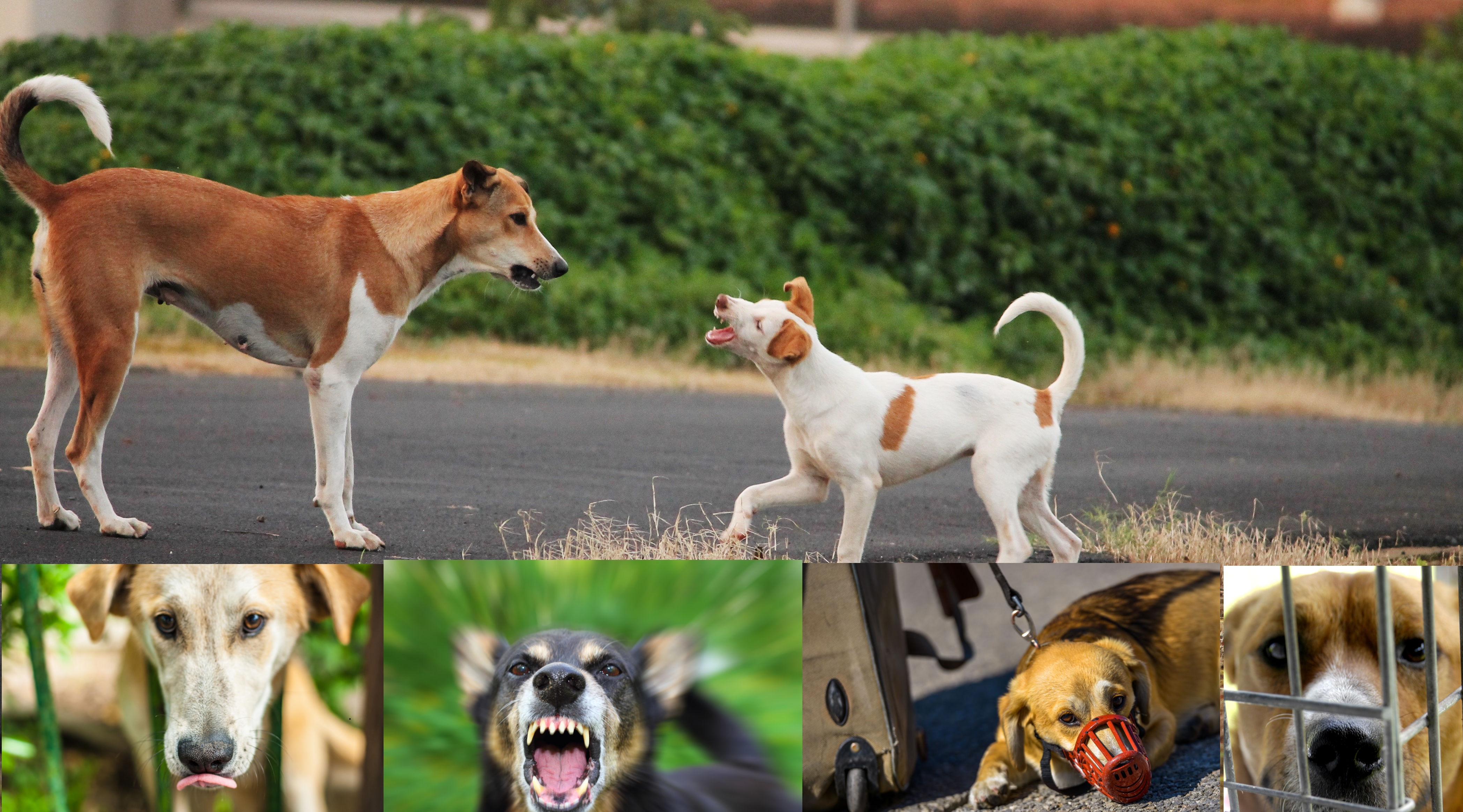Reactive dogs are traumatised dogs

Throughout the dog community you will see references to ‘reactive dogs.’ Indeed, there are quite a few courses, that offer to help these ‘reactive dogs’ in group sessions. The other, common sight, is a dog wearing a coat that signals it is ‘reactive’ or, has some other problem.
For me, there are two issues with the above. The first is that trying to ‘fix’ a reactive dog in a group session is a difficult thing to do – these dogs may be reactive for any number of reasons; group sessions may not be ideal for dealing with the background cause of the problem. Second is the labelling of dogs with coats – this, on the surface, seems reasonable. The owner is letting other people know that their dog has an issue. That is fine; however, many of these owners don’t seem to understand that these dogs need help in overcoming the background issue that is making them ‘reactive.’ Simply labelling them does not, ultimately, help the dog if the next steps are not taken to help the dog overcome it’s problems.
I think more thought should be given into how we describe these dogs. Their ‘reactivity’ should be viewed as a symptom of their behavioural problem. Many, if not most, of these dogs are, in fact, traumatised. They may have been abused, attacked by other dogs, frightened by something, or may have other, identifiable behavioural issues causing the reactive behaviour.
There is no doubt, in my mind, that the only way to help these ‘traumatised’ dogs is to, clearly, identify the underlying causes of their problems and to work, carefully and in a focused way on these problems. This is the only way to, successfully, deal with ‘reactive’ behaviour in these ‘difficult cases’ in my view.
To illustrate my point, let me describe a case that I dealt with a while ago. While walking with my dog in the forest, we were approached by a very nervous lady with, a very aggressive, snarling whirling dervish of a dog. My wife took my dog, away from the scene. The lady stopped, some distance away. She told me that her dog was a rescue, from abroad and, she had had her for 3 weeks, or so. In that time she had bitten her a couple times, had bitten other dogs and tried to bite other people. During our, brief, conversation, her dog was snarling, barking and lunging towards me. A ‘reactive’ dog, indeed.
I asked her to let the dog of the lead, she did so. Of course, this dog rushed at me, snarling and barking as it came. My reaction? I simply ignored this dog and kept talking to the owner. The dog backed of a little and stopped snarling and barking, now looking at me nervously and, clearly, a little puzzled by my behaviour. I, then, knelt down, with a small biscuit in my outstretched, open hand; still not looking at or acknowledging the dog, at all. The dog, slowly, approached and took the biscuit and dashed away to a ‘safe’ distance. I repeated this a few more times. The dog, relaxed enough, to approach me and to place its’ front paws on my knees to take from my hand. This, whole process, took around 5 minutes.
Of course, I would not recommend an ‘unqualified’ individual doing what I have just described. I, however, had seen this type of behaviour many times. Given the dogs’s history, I was pretty sure I knew why this dog was behaving as it was, and that it was not an aggressive ‘killer.’ My suspicions were proved to be correct. After a couple of sessions, this dog was developed into a more relaxed, sociable creature, happy to be with other dogs and people.
So, the question is, what was ‘wrong’ with this dog. It was, clearly, ‘reactive’ and, apparently, very aggressive. The reactivity was, in fact, a symptom of fear. This dog, no doubt, had suffered cruelty on the streets and had to fight to survive on a daily basis. This was a traumatised dog. By understanding the reasons behind the reactive behaviour, it was possible to approach the dog in the right way and, to help it overcome its’ behavioural problems.
Many ‘problem’ dogs, in my opinion, are exhibiting behaviours as a direct result of traumatising events, somewhere in they’re lives. Therefore, it is essential to understand that a ‘traumatised’ dog will need specific strategies to deal with the behaviours resulting from trauma.
Although, any dog, can be exhibiting behavioural problems because of earlier trauma; I see these types of problems commonly in dogs that have been rescued and rehomed, sometimes on multiple occasions. Of course, most of these dogs can be helped when a clear understanding is reached of the causative factors influencing their behaviour.
